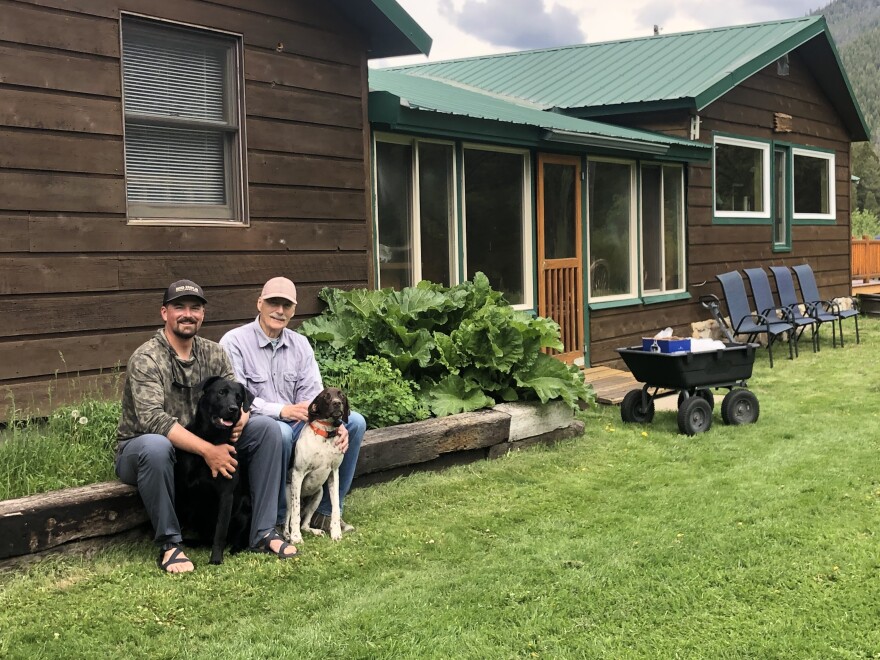Recent surveys have found the lowest trout populations on record in some of southwest Montana’s most iconic rivers, but the exact causes of the decline remain a mystery. The state, outfitters and conservation advocates agree there’s a problem but don't agree on what should be done.
Early on a recent Saturday morning, when most people are sleeping in, Brian Wheeler gets up, cleans his kitchen counter, and lays out a series of calibration liquids for water quality monitoring equipment.
“Yeah I had to learn online, you know, watching YouTube videos that the company produces, here’s how you calibrate for each of these probes,” Wheeler said.
Wheeler is the Executive Director of the Big Hole River Foundation, which does research and advocates for water quality in the region.
Wheeler is gathering data on nutrient pollution, trying to solve a mystery: something in the water is killing fish in the Big Hole and throughout the Jefferson Basin.

“Yeah number one priority is: get good data. Everything kind of hinges on that,” Wheeler said.
The Big Hole River is one of the most iconic blue-ribbon trout fisheries anywhere in the world.
But trout populations in the region have declined over the last decade, often attributed to hotter water temperatures, lower stream flows and increased pressure from anglers. Surveys conducted by state biologists this spring found the lowest numbers since records began in 1969.
In recent years guides have been encountering fish full of open lesions and fungal infections.
“I have a video of Brian Wheeler netting a fish, could not see out of its left eye and was missing a chunk of its gil plate. I mean it looked like something out of The Last of Us,” Wade Fellin said.

Fellin has worked with Wheeler and the water quality advisory group Upper Missouri Waterkeepers. Fellin also runs the Big Hole Lodge, a fly fishing retreat on a tributary of the Big Hole.
While no one knows exactly what parasite, pathogen, or other x-factor is directly killing the fish, the combination of stressors affecting the river can easily overpower fish’s limited immune response, and make them incredibly vulnerable to infection.
Wheeler, Fellin and other outfitters and river guides have been sounding the alarm about the fishery crisis for years, demanding an urgent, multi-level government response.
“It’s not the current governor’s problem as much as it wasn’t the last governor’s problem per se. It’s been a lack of prioritization and leadership at that level all the way along,” Fellin said.
Advocates have called on Gov. Greg Gianforte every year since 2021 to create a task force to find solutions to the threats facing trout in southwest Montana.
Brian Wheeler says that would help organize the multiple state and federal agencies that collect data and oversee different parts of the watershed.
“A task force like this would give you a place to essentially share all that we’re working on, figure out how it applies specifically to fisheries’ health, and then make decisions from there,” Wheeler said.
This week, Gianforte sent a letter, in response to the latest call for action, saying he shares concerns about fish in the Jefferson Basin and has directed state wildlife officials to begin new efforts to study the issue.
In his letter, the governor says that testing of trout has shown no unusual diseases and there are many questions still unanswered.
Montana’s Fish Wildlife and Parks (FWP) Department Director Dustin Temple committed the Department to an all hands on deck response at an FWP Commission meeting in early June.
“All of the resources available to the department are available to the Fisheries Division as they tell us what they need,” Temple said.
FWP is working on new research plans to implement next spring.
But Fellin and others are not satisfied with the pace of the state’s response and say it lacks details.

Gianforte has so far refused to address the task force idea and, this week, the advocates took matters into their own hands, launching a privately funded effort called “Save Wild Trout.”
Fellin says the group will gather experts to study southwest Montana’s trout population crash, identify causes, and propose solutions.
That will include work done by Brian Wheeler, who is the only person collecting data on the possible impacts of nutrient pollution on the Big Hole River.
Wheeler spends hours driving in his truck to different parts of the river to collect readings and samples.
“Try and get a spot with good mixing you know, so you’re not like in a back eddy or water that’s still,” Wheeler said.
While state and independent researchers search for answers, Montana is on the cusp of another potentially hot, dry summer.
“Let’s be honest. It’s June we’re getting piles of rain right now, the river’s full, it’s not even hot yet. You think it’s stressful now, wait until we get to August,” Wheeler said.


